Educational
Initiatives

Sense of Wonder
Sense of the Wild
Text from RCLA brochure available as a PDF for download and distribution here
This year, 2015, presents a special opportunity to restore Rachel Carson’s sense of wonder and call attention to her sense of the wild, both are needed now more than ever. In this brochure we consider both “senses” and offer activities to celebrate their importance.
Rachel Carson’s Sense of Wonder
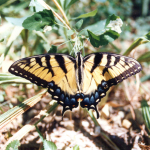 Rachel Carson’s 5th book, The Sense of Wonder is a warm and loving guide to ways that parents and other mentors can help children retain their fascination with the natural world. Carson wanted us to know that generations coming together to share positive “fun” encounters with nature in its many forms can enrich individual lives and create pathways to a better society. In 2015 we celebrate the 50th anniversary of the publication of The Sense of Wonder.
Rachel Carson’s 5th book, The Sense of Wonder is a warm and loving guide to ways that parents and other mentors can help children retain their fascination with the natural world. Carson wanted us to know that generations coming together to share positive “fun” encounters with nature in its many forms can enrich individual lives and create pathways to a better society. In 2015 we celebrate the 50th anniversary of the publication of The Sense of Wonder.
Nature was a life-long source of deep happiness for Rachel Carson. She believed all of us carry the potential for appreciating nature’s gifts, and that experience can start in the very young. She wrote:
“If a child is to keep alive his inborn sense of wonder…he needs the companionship of at least one adult who can share it, rediscovering with him the joy, excitement and mystery of the world we live in.”
—(The Sense of Wonder) 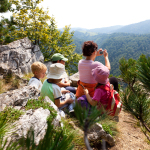
Rachel believed that contact with nature presents opportunities for children and adults to engage the senses:
“Exploring nature…is largely a matter of becoming receptive to what lies all around you. It is…learning to use your eyes, ears, nostrils and finger tips, opening up the disused channels of sensory impression.”
—(The Sense of Wonder)
Rachel experienced great pleasure from the natural surroundings at her home in Maryland where she lived while writing Silent Spring as well as at her cottage in Maine. While changes have occurred to both neighborhoods these two places have remained largely as Carson planned and both retain inspiring reminders of her delight in the sights and sounds of nature.
 The Sense of Wonder includes Rachel’s view that nature is also a source of healing power for all ages. She wrote:
The Sense of Wonder includes Rachel’s view that nature is also a source of healing power for all ages. She wrote:
“Those who contemplate the beauty of the earth find reserves of strength that will endure as long as life lasts.”
—(The Sense of Wonder)
Carson’s belief in nature as
healer validated
The benefits of nature have been affirmed by psychologists over the years since The Sense of Wonder’s publication. In a 2013 pilot study, scientists verified yet again the usefulness to people from being in the presence of green surroundings. Using portable EEGs to measure brain waves while subjects were walking through tree filled parks, researchers found that “…seeing green is likely to have a restorative effect and help with attention fatigue and stress recovery.” (NYT, “Brain Fatigue Goes Green,” 4-2-13). This reinforces Carson’s belief in the healing power of nature.
About The Sense of Wonder: The text of the book was originally published as a magazine article entitled “Help Your Child to Wonder” in the July 1956 Woman’s Home Companion. The text appeared in book form as The Sense of Wonder in January 1965, illustrated by elegant, black and white photographs from Charles Pratt and others. A subsequent edition of The Sense of Wonder was published by The Nature Company in 1990 with color photographs by William Neill. A later edition of The Sense of Wonder published in 1998 featured color photographs of nature subjects by Nick Kelsh.
The 50th Anniversary of The Sense of Wonder takes place in 2015 and its message is as relevant today as it was in 1965.
How can we contribute to
this celebration?
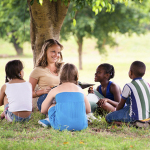 Read The Sense of Wonder, Pass it on to any new Parents, Aunts, Uncles, Grandparents.
Read The Sense of Wonder, Pass it on to any new Parents, Aunts, Uncles, Grandparents.
Ask the local library to have a public reading of The Sense of Wonder, for adults and for children one of the many biographies about Rachel Carson.
Organize a sense of wonder wildlife walk.
Rachel Carson’s Sense of the Wild
The term “sense of the wild” refers to Rachel Carson’s message about the positive value of wildlife (including plants and animals in their natural settings) due in part to the services they provide (at no charge) for us and other residents of the planet. These activities make possible the survival of their species — as well as ours. We can interrupt and damage these services when we overlook their existence, undervalue their importance and fail to protect the sources that generate them.
In describing the beneficial insects that help control pests Rachel Carson wrote:
“…through the circumstances of their lives, and the nature of our own wants, all these have been our allies in keeping the balance of nature tilted in our favor… The terrible danger is that we have grossly underestimated their value…”
—(Silent Spring p. 251)
Details about the number and types of nature’s services have increased from Carson’s day as scientists learn more about the ways that wildlife are valuable to us. Here are a few:
 Dragonflies help control mosquito populations (Silent Spring)
Dragonflies help control mosquito populations (Silent Spring)
Prairie dog towns consisting of multiple underground tunnels help water to reach and recharge aquifers in the southwest U.S. (Rewilding the World)
Wolves preying on elk create conditions for aspen trees to flourish along streams and rivers in Yellowstone Park resulting in greater biodiversity, (Rewilding the World)
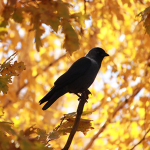 Oak trees have been found to support over 500 species of butterflies and moths the caterpillars of which can feed migratory birds and their offspring. (Bringing Nature Home)
Oak trees have been found to support over 500 species of butterflies and moths the caterpillars of which can feed migratory birds and their offspring. (Bringing Nature Home)
Oysters in the Chesapeake Bay can help keep the water clear if large numbers are not dredged up for food. Taking unlimited quantities of oysters for the marketplace or maintaining them in the Bay to help clean the water, is a choice facing regulators and communities that impact the Bay. (The Work of Wildlife).
More Examples of wildlife at work reflecting a sense of the wild:
- Parasitic wasps
- Mycorrhizal fungi
- Migratory songbirds
“Bugs are our Friends”
In a cartoon strip from the mid 1990s, Dennis the Menace shows his own sense of the wild by urging his neighbor Mr. Wilson not to spray insecticides in his yard because, “bugs are our friends.” Mr. Wilson stops applying the insecticide and gives as his reason “Those bugs got themselves a good lobbyist.” [in the form of Dennis]. Dennis expressed well a young child’s sense of wonder about insects. He also could have been referring to “friendly bugs” such as solitary bees that pollinate plants, beneficial insects like parasitic wasps that help control pest insects, caterpillars that are food for birds, and insects that help control weeds, to mention just a few.
Doug Tallamy, noted author and entomologist, has stated, “the terrestrial ecosystems on which we humans all depend…would cease to function without our six-legged friends [the insects]” (Bringing Nature Home, p. 15)
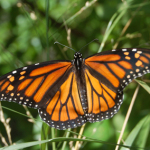 Most wild creatures need a natural habitat to accomplish their work. Although many of these areas have been reduced in the past, recently more are being restored so that rewilding (repopulation with wild creatures) can take place. Each of us can help to restore habitats even if we don’t completely understand how ecosystems work and cannot fully return an area to its wild state. Planting milkweed for monarch butterflies, providing organic growing conditions for plants that bees visit (for pollen and nectar), choosing garden plants that are first and foremost beneficial to wildlife (not primarily because they are beautiful), allowing dandelions to grow where bees can use them for pollen, helping to keep an existing patch of forest from being destroyed to develop more concrete buildings, are within the capacity of most of us.
Most wild creatures need a natural habitat to accomplish their work. Although many of these areas have been reduced in the past, recently more are being restored so that rewilding (repopulation with wild creatures) can take place. Each of us can help to restore habitats even if we don’t completely understand how ecosystems work and cannot fully return an area to its wild state. Planting milkweed for monarch butterflies, providing organic growing conditions for plants that bees visit (for pollen and nectar), choosing garden plants that are first and foremost beneficial to wildlife (not primarily because they are beautiful), allowing dandelions to grow where bees can use them for pollen, helping to keep an existing patch of forest from being destroyed to develop more concrete buildings, are within the capacity of most of us.
Just as a chef cannot prepare a meal without a kitchen, plants cannot produce safe food for bees, beneficial insects, birds and ourselves without: healthy soil, a favorable climate, clean water, fresh air and sunlight. Wildlife work in ecosystems to help generate these conditions, we, the bees and other pollinators benefit from their work.
Some species are able to thrive close to human habitation, others are not. They all, however, require clean water, fresh air as well as healthy food and can be helped when we choose as consumers to purchase organically-grown products and to avoid the use of chemical pesticides and fertilizers on our own gardens and lawns.
Our attitudes toward wildlife
are important:
We can feel affection, admiration, and empathy for wild creatures existing in nature, provided we do not think of them as pets, disposable property, or replaceable by machines.
We need to realize that “The species we…share space with are indispensible…Without them the attainments we take for granted-agriculture, medicine, our tenuous security on this planet-fall away.” (Caroline Fraser, Rewilding the World)
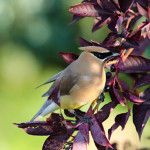 Rachel did not claim that all wild creatures were our allies. She did maintain that our insect friends greatly outnumber our insect enemies. Rachel believed that when we reduce the numbers of pest insects to protect ourselves or our property we must use ways that spare damage to our insect allies as much as possible. Rachel cautioned against the broadcast spraying of insecticides into areas where beneficial insects could be found, even for the purpose of reducing the numbers of certain pest insects. She advocated the use of natural enemies (rather than chemical pesticides) whenever possible as the primary means of reducing pest populations.
Rachel did not claim that all wild creatures were our allies. She did maintain that our insect friends greatly outnumber our insect enemies. Rachel believed that when we reduce the numbers of pest insects to protect ourselves or our property we must use ways that spare damage to our insect allies as much as possible. Rachel cautioned against the broadcast spraying of insecticides into areas where beneficial insects could be found, even for the purpose of reducing the numbers of certain pest insects. She advocated the use of natural enemies (rather than chemical pesticides) whenever possible as the primary means of reducing pest populations.
How can we contribute to
The Sense of Wonder?
Enter the Rachel Carson Intergenerational Sense of Wonder Contest to directly share your thoughts about a Sense of Wonder experience with others. Each entry must be the joint effort of at least one member of an older and one member of a younger generation. The Contest gives children a way of getting to know more about nature through an older person’s experience (most elders have had greater contact with nature than today’s children). It gives older persons the opportunity to revive their own sense of wonder by sharing in the energy and excitement of young people.
Including a sense of the wild is an option for entries in the 2015 Rachel Carson Intergenerational Sense of Wonder Contest. Those interested in learning more about this option probably will want to read about the work of wildlife.
Written by Diana Post with help from Munro Meyersburg.
January 2015

